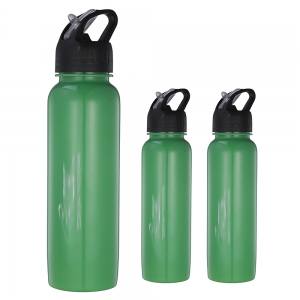Regenerating “green” from plastic bottles
PET (PolyEthylene Terephthalate) is one of the most widely used plastics. It has good ductility, high transparency, and good safety. It is often used to make beverage bottles or other food packaging materials. . In my country, rPET (recycled PET, recycled PET plastic) made from recycled beverage bottles can be reused in automobiles, daily chemicals and other fields, but it is not currently allowed to be used in food packaging. In 2019, the weight of beverage PET bottles consumed in my country reached 4.42 million tons. However, PET takes at least hundreds of years to completely decompose under natural conditions, which brings a great burden to the environment and economy.
From an economic perspective, discarding plastic packaging after one-time use will lose 95% of its use value; from an environmental perspective, it will also lead to crop yield reduction, ocean pollution and many other problems. If used PET plastic bottles, especially beverage bottles, are recycled for recycling, it will be of great significance to environmental protection, economy, society and other aspects.
Data shows that the recycling rate of PET beverage bottles in my country reaches 94%, of which more than 80% of rPET enters the recycled fiber industry and is used to make daily necessities such as bags, clothing, and parasols. In fact, remaking PET beverage bottles into food-grade rPET can not only reduce the use of virgin PET and reduce the consumption of non-renewable resources such as petroleum, but also increase the number of cycles of rPET through scientific and strict processing techniques, making its safety It has already been proven in other countries.
In addition to entering the recycling system, my country’s waste PET beverage bottles mainly flow to food waste treatment plants, landfills, waste incineration power plants, beaches and other places. However, landfilling and incineration can lead to air, soil and groundwater pollution. If waste is reduced or more waste is recycled, environmental burdens and costs can be reduced.
Regenerated PET can reduce carbon dioxide emissions by 59% and energy consumption by 76% compared to PET made from petroleum.
In 2020, my country made a higher commitment to environmental protection and emission reduction: achieving the goal of peaking carbon before 2030 and becoming carbon neutral before 2060. At present, our country has introduced a number of relevant policies and measures to promote the comprehensive green transformation of economic and social development. As one of the effective recycling paths for waste plastics, rPET can play a role in promoting the exploration and improvement of the waste management system, and is of great practical significance in promoting the achievement of the “double carbon” goal.
Safety of rPET for food packaging is key
Currently, due to the environmentally friendly properties of rPET, many countries and regions around the world have allowed its use in food packaging, and Africa is also accelerating its production expansion. However, in my country, rPET plastic cannot currently be used in food packaging.
There is no shortage of food-grade rPET factories in our country. In fact, our country is the world’s largest plastic recycling and processing place. In 2021, my country’s PET beverage bottle recycling volume will be close to 4 million tons. rPET plastic is widely used in high-end cosmetics, personal care product packaging, automobiles and other fields, and food-grade rPET is Exported abroad.
The “Report” shows that 73.39% of consumers take the initiative to recycle or reuse discarded beverage bottles in their daily lives, and 62.84% of consumers express positive intentions for PET recycling to be used in food. More than 90% of consumers expressed concern about the safety of rPET used in food packaging materials. It can be seen that Chinese consumers generally have a positive attitude towards the use of rPET in food packaging, and ensuring safety is a necessary prerequisite.
The true application of rPET in the food field must be based on safety assessment and pre- and post-event supervision on the one hand. On the other hand, it is expected that the whole society will work together to jointly promote the high-value application of rPET and further promote the development of circular economy.
Post time: Jul-25-2024
